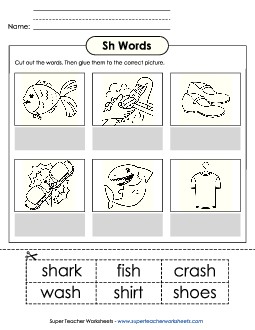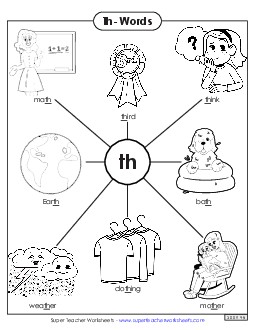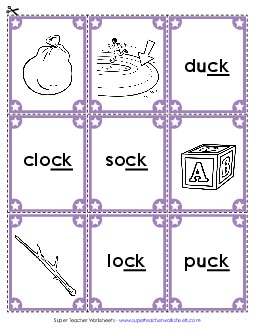Phonics: Consonant Digraphs (ch, th, sh, wh, and ck)

This page has over 20 worksheets for teaching the ch digraph. Includes cut-and glue activities, card games, worksheets, flashcards, word sliders, and more.
Consonant Digraph: ShHere you'll find a large selection of printables for teaching the sh digraph. Your students will enjoy the word wheels, reading sliders, mini-books, and sorting game.
Consonant Digraph: ThThis page has worksheets for teaching the two /th/ sounds. (The letters th make two sounds: There's buzzing-th, as in then. There's also unvoiced-th, as in thick.) Teach students about these two sounds with these activities.
Consonant Digraph: WhHelp your students learn to read and write words with the wh digraph. Words include which, whale, white, whistle, and wheel.
Consonant Digraphs: CkThis page contains worksheets, card games, and learning centers for teaching students about words that end in consonant digraph ck.
Consonant Digraphs: Ch and Sh (Mixed)Learn to differentiate between the /ch/ and /sh/ sounds with these printable activities. Includes picture and word sorts, mini-books, and practice worksheets.
Phonics: Consonant BlendsThis section of our site will link you to over 100 worksheets for teaching consonant blends. Includes bl, br, cl, cr, dr, fl, fr, gl, gl, pl, pr, sc, sl, sn, and tr.
All Phonics Worksheets (Full Index)Browse through thousands of phonics worksheets on STW. Topics include phonemic awareness, blends, digraphs, diphthongs, long vowel sounds, and short vowel sounds.



Phonics digraphs are an essential part of early literacy education in elementary schools, helping young readers understand how certain letter pairs create unique sounds. A digraph is a combination of two letters that come together to make a single sound, such as "ch," "sh," "th," and "wh." These common digraphs are typically introduced to students in 1st and 2nd grade as they progress in their reading and phonics skills. Understanding digraphs is crucial for reading fluency, as English contains many words with these letter combinations that do not follow simple phonetic patterns.
In the classroom, teachers use various methods to introduce and reinforce digraphs. Engaging students in word sorts, where they categorize words by sound, helps them visually and audibly distinguish between different digraphs. Teachers may also use multisensory techniques, such as having students trace letters while saying the digraph sound, to help connect the sound to the letter combination. Reading books that emphasize specific digraphs or practicing with digraph flashcards can also reinforce these concepts. Additionally, students are often encouraged to sound out and blend digraphs within words, improving both their decoding skills and confidence in reading.
Recognizing and understanding digraphs is an important step in building literacy skills because digraphs appear frequently in English words and are essential for proper pronunciation and comprehension. As students develop fluency in reading, their ability to recognize digraphs allows them to read more smoothly and with better understanding. Since many common words, such as "this," "that," "ship," and "which," contain digraphs, a strong foundation in these phonics skills helps students tackle more advanced reading material. By mastering digraphs with the help of Super Teacher Worksheets' free printable worksheets, students gain the tools to read, write, and spell with greater accuracy, setting the stage for successful learning in higher grades.






